
Day Skipper Motor
Day Skipper Training Cornwall
Day Skipper Motor
 Take charge on short passages under instruction, with help and advice from your instructor.
Take charge on short passages under instruction, with help and advice from your instructor.
This course can also help you get the best from your modern electronic aids such as GPS and radar, which are now virtually standard equipment on modern motor cruisers.
Before attending the course you should be able to navigate and are well advised to attend the RYA Day Skipper shorebased course to brush up on your skills.
Requirements & Outcomes
| Pre-course experience | 2 days practical experience on a motor cruiser |
| Assumed knowledge | Theory to the level of Day Skipper. It is recommended that you attend the Day Skipper Shorebased Course before taking this practical course |
| Minimum duration | 4 days |
| Minimum age | 16 |
| Course content | Preparation for sea, boat handling, navigation, pilotage, passage making, meteorology, rules of the road, engines, emergency situations, night cruising |
| Ability after the course | Able to skipper a motor cruiser in familiar waters by day |
Further Information
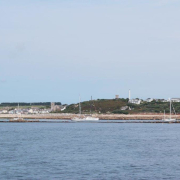 Areas covered during this course are:
Areas covered during this course are:
Preparation for sea
You will gain a knowledge of basic stability and buoyancy for small vessels.
You will be able to prepare a cruising vessel for sea, including engine checks, securing and stowage of all gear on deck and below at the end of this session.
Deck work:
You will learn how to prepare an anchor, mooring warps and how to take charge on deck when mooring alongside, coming into a buoy, anchoring, weighing anchor and slipping from a buoy or an alongside berth.
Navigation:
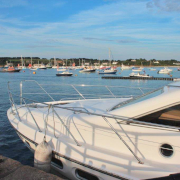 You will become proficient in chart work, routine navigational duties on passage including:
You will become proficient in chart work, routine navigational duties on passage including:
- Knowledge and limitations of AIS
- You will understand working up dead reckoning (DR) and Estimated Position (EP), use of a lead line or similar, how to work out a course to steer to allow for set, drift and leeway.
At the end of this session you will be able to:
- Take and plot visual fixes
- Use electronic navigation equipment for position fixing
- Use secondary method of position fixing
- Estimate today heights and tidal streams
- Use waypoints and routes
- Use knowledge of IALA buoyage
- Maintain navigational records
- Use an echo sounder
Pilotage:
This will enable you to:
- Prepare and execute a pilotage plan for entry into, or departure from, harbour
- Use lead and clearing lines
- Use transits and soundings to aid pilotage
Meteorology:
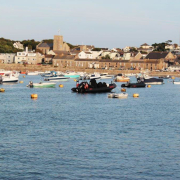 How to interpret shipping forecasts and use a barometer as a forecasting aid and to enable you to forecast information.
How to interpret shipping forecasts and use a barometer as a forecasting aid and to enable you to forecast information.
Rules of the Road:
This session will give you a clear understanding and suitable awareness of other water users both at sea and in close quarter manoeuvring and give a practical understanding of the International Regulations for Preventing Collisions at Sea.
Maintenance & repair work:
Checking on board equipment and understanding the properties of synthetic fibre ropes
Engines:
An overview equipping you with the knowledge required to prevent common engine faults and ensure competency in the following areas:
- Need for periodic maintenance checks on engines and electrical installations
- Requirement for tool kits, spares and lubricants
- Location of filters and bleed points for fuel
- The tension of drive belts and how to adjust or replace them
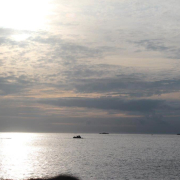 At the end of this session candidates can carry out checks before starting, while running and after stopping, clean water filters, locate impellers, estimate fuel consumption at various speeds and effects of hull/gear fouling and carry out basic troubleshooting.
At the end of this session candidates can carry out checks before starting, while running and after stopping, clean water filters, locate impellers, estimate fuel consumption at various speeds and effects of hull/gear fouling and carry out basic troubleshooting.
Victualling:
How to victual a motor cruiser appropriately for the planned passage.
Emergency situtions:
Following this session you will know the correct procedure for the following:
- Issuing a distress signal by all available means, including distress flares and VHF radio, in an emergency
- How to use a life raft
- How to secure a tow
- Rescue procedures including helicopter rescue
- The effects of cold water shock on a casualty in the water
- The aftercare requirement of a casualty who was been in the water
- Carry out the correct action as skipper for a man overboard
Handing under power:
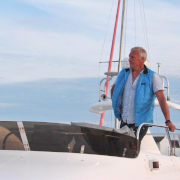 Understanding the effect on waves on boat handling and crew comfort. An overview of different styles of hull and their propulsion systems.
Understanding the effect on waves on boat handling and crew comfort. An overview of different styles of hull and their propulsion systems.
Method for mooring and how to take into account the wind and current conditions when executing manoeuvres.
Candidates will be taught to:
- Steer a straight course
- Turn in a confined space
- Anchor at a predetermined position
- Berth alongside
- Leave an alongside berth
- Pick up a mooring buoy
- Use power and trim tabs correctly
Passage making:
This session is designed to give an understanding of marina locks, the practical benefits and limitations of a chart plotter or GNSS. Candidates will be able to plan and make a coastal passage on completion, taking into account relevant navigational hazards and limitations imposed by the type of boat and the strength of the crew.
Night cruising:
You will experience cruising at night, including leaving and entering a harbour, this will provide you with an understanding and consideration for pilotage pans, keeping alookuot and identifying marks by night.
If you require further information about this course, contact Phil on +44 7971 546378.